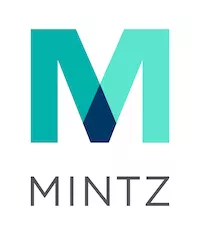- within Law Practice Management and Coronavirus (COVID-19) topic(s)
Artificial Intelligence (AI) inventions have aided development in nearly every industry, but perhaps none more so than synthetic biology. For synthetic biology researchers, AI has developed into a vital tool to create cutting edge applications. Growth is expected to accelerate with the AI healthcare market set to reach $6.6 billion by 2021, a 40 percent growth from its current size. Biotech and synthetic biology companies that use AI and investors in these companies should be aware of various legal aspects related to patenting. This blog is part 1 of a multi-part series that explores various patenting considerations for AI in biotech and synthetic biology. Key considerations for protecting AI inventions in biotech and synthetic biology include:
- What is the best protection for the specific invention - traditional intellectual property (IP) protections or contractual, or both?
- Is the invention eligible subject matter for patent protection under rapidly evolving case law?
- Is the scope of protection altered for machine learning inventions when applied to different users or customers?
- Who are the inventors when the invention is AI generated but human designed or curated? See here for a discussion of the recent notice from the U.S. Patent and Trademark Office (USPTO) on AI.
- Are predictive algorithms eligible for a broader scope of IP protection based on the ability to predict outcomes? And can this be used as a competitive advantage to shut out other third parties in the marketplace?
- Who is the owner of iterative data generations created by machine learning?
To set the stage for exploring the role of AI in biotech and synthetic biology advancements, it is helpful to consider some of the applications in the industry and potential issues in employing traditional IP protections, like patents. The following fields have seen developments on a meteoric pace using AI technology: sequencing and functional genomics; drug design, discovery, and testing; pharmacology; big data analytics; cancer diagnosis; and target identification and designing constructs, just to name a few. Each area of rapid development faces its own challenges for protection of the IP developed.
Sequencing
Companies and researchers are using AI to advance DNA sequencing. For example, Google's DeepMind is developing a deep learning technology that can be used to reconstruct true genome sequences from high-throughput sequencing data. A team comprised of Microsoft researchers and collaborators from MIT, Harvard, UCLA, and Massachusetts General Hospital have developed a machine learning tool that improves the accuracy of CRISPR technology by predicting and preventing CRISPR from accidentally editing genomic regions similar to the target region.
AI is also being used to advance the field of functional genomics, a field of molecular biology that attempts to describe gene (and protein) functions. These developments are highly dependent upon the large data collections for genome sequencing. Researchers just published a study identifying a likely key cause of autoimmune disease as early activation of memory T cells. Researchers used a new computational method called CHEERS to enable them to identify cell states relevant for immune disease.
One major issue with patenting sequencing inventions is that, as of 2013, human genes are not patentable. However, human DNA sequences manipulated in a lab are patentable as they are not found in nature, allowing the patent owner to control the use of that genetic modification.
Pharmaceutical Design, Discovery, and Testing
AI inventions are revolutionizing the drug design, discovery, and testing industry. AI-based drug designer Insilico Medicine has raised $37 million to help commercialize its technology, on the heels of a landmark paper for the company that showed its computer networks were able to generate, synthesize, and preclinically validate a series of promising compounds from scratch in less than 50 days. Typically, drug discovery starts by testing thousands of molecules over several years to eventually get down to a few novel molecules to take to human trials. Insilico Medicine's AI technology, which combines molecular generation models with generative models, accelerated this process from years to weeks. This use of computer networks to design new drug compounds raises the question of who is the inventor-is it the inventor, the computer networks or the humans who designed the computer networks to generate, synthesize, and validate the new drug compounds? Insilico Medicine released the MOSES source code as open source, but aims to use this technology to create new therapeutic programs for cancer, immunology, fibrosis, nonalcoholic steatohepatitis and central nervous system conditions. Most open source programs are governed by a license that restricts the use of the source code or at least requires copyright acknowledgment, but the MOSES source code was released without even copyright ownership claims.
AI technologies are engendering the development of a host of new drugs based on a greater understanding of protein structure. Google's DeepMind has led to an improvement in predicting the physical structure of proteins, the "basic building blocks of disease." In turn, this has aided in the advancement of drug design. Knowing the shape of a protein allows researchers to know how a drug will bind to that protein and enable the development of new drugs. Codexis has developed proprietary program called CodeEvolver that uses machine learning algorithms to learn protein sequence changes and their impacts on protein function. MIT CSAIL scientists have also developed a system that they hope will aid in protein engineering. The machine learning model breaks down amino acid chains to determine a protein's structure. By determining the protein's structure, the team aims to design proteins and enzymes.
These developments raise the question of whether the greatly expanded knowledge of protein structure is eligible for traditional IP protection. If so, are the AI systems that were essential in creating the new drugs creditable inventors? The USPTO recently issued a call for comments on whether "patent laws and regulations regarding inventorship need to be revised to take into account inventions where an entity or entities other than a natural person contributed to the conception of an invention." A process that employs machine learning to identify eligible protein structures through mathematical processes that could technically be done by a human over the course of many years, if not decades, may not even be eligible for patent protection. AI and machine learning are poised to make drug design processes more powerful, more productive, and more efficient, but many of these processes are not patent eligible if there is no inventive step beyond improved expediency.
Pharmacology
The use of machines in drug discovery and design is not a new phenomenon itself. High-throughput screening (HTS), a practice that has been in use for almost 30 years, leverages the advantages of robotics, data control software, and other devices to allow researchers to rapidly conduct millions of pharmacological tests, the results of which identify the starting points for drug design. Even still, drug discovery is an onerous process - bringing a new drug to market can take 15 years and cost over $2 billion. In an effort to make drug design more efficient, researchers have begun employing artificial intelligence techniques to analyze data at the molecular level. As discussed above, Google's DeepMind system uses machine learning to predict the three-dimensional shape of proteins, which is integral in understanding how other molecules bind to the protein, an insight that is crucial to drug development. Recursion, a startup company in Salt Lake City, uses a different approach, opting to analyze images of cells in order to understand how new drugs affect them. Artificial intelligence is even being used in tandem with high-throughput screening, wherein machine learning models are able to mine key data points, like descriptors or features of active molecules, from HTS data.
Big Data Analytics
AI is playing a leading role in the use and valuation of large collections of healthcare data. For example, Google and Mayo Clinic announced a partnership to solve complex medical problems using data-driven medical innovation. A team from the University of California in San Diego created a better diagnostic tool by training AI on medical records from 1.3 million patients under the age of 18. The tool is able to predict childhood diseases nearly as accurately as an experienced pediatrician. GE Healthcare announced that it will integrate Edison, GE's platform that helps to increase the adoption of AI tools, with the American College of Radiology AI-LAB. This integration will allow the American College of Radiology to more easily create AI applications, which can then be used by radiologists at their own institutions. Additionally, researchers at Mount Sinai created a deep learning framework to help detect neurodegenerative diseases in human brain tissue, including Alzheimer's.
Cancer Diagnosis
AI is also being used for cancer diagnosis and treatment. In one study, Google's AI team worked with researchers at Northwestern University, New York University-Langone Medical Center and Stanford Medicine, to generate an overall prediction of malignancy from 3D volumetric scans, as well as identify subtle lung nodules. Researchers using AI were able to detect 5% more cancer cases while reducing false-positives by more than 11% compared to the findings of unassisted radiologists. A team from Heidelberg University Hospital and the German Cancer Research Centre created a machine learning method that analyzes MRIs to calculate the impact of various treatments on brain tumors. The Cleveland Clinic's Center for Clinical Artificial Intelligence is also using AI to improve cancer treatment. At the Center, an AI predictive model was developed to determine if a particular treatment will be effective for a particular patient by finding genomic biomarkers. There are two key reasons why obtaining a patent for diagnostic algorithms is very tough. First, algorithms are generally not eligible subject matter for a patent, though there are exceptions through which to thread the needle. Second, a diagnostic algorithm may reflect a law of nature, although as yet unknown, regarding genetic codes.
Target Identification and Designing Constructs
Two areas of rapid advancement due to AI inventions are target identification and designing constructs. Among the cutting edge uses of AI to further target identification in life sciences, one of the most exciting areas of development is in the diagnosis and treatment of Alzheimer's disease. Earlier this year, Bill Gates announced a new fund, the Diagnostics Accelerator, to find an end to the disease by accelerating the research already underway. In his announcement Gates succinctly explained that one of the major difficulties in finding a treatment for Alzheimer's is the lack of diagnostic tools. He labels this a "chicken and egg" scenario, explaining that "discovering a treatment for Alzheimer's requires lots of clinical trials for new drugs-but it's difficult to enroll participants without a way to identify people who have the disease early enough for potential treatments to work." Finding a treatment for Alzheimer's has the added complication of needing to develop drugs that can bypass the blood-brain barrier (BBB), a selective semipermeable structural and chemical boundary that surrounds the brain and typically prevents foreign objects from invading the brain tissue. AI inventions are being employed to solve the chicken and egg problem. For example, a Canadian team published a paper describing how they trained a machine-learning algorithm to predict the early stages of Alzheimer's based on neuroimaging and other data. Researchers believe that neural degeneration begins many years - perhaps even decades - before a person experiences the first outward symptoms. The early degradation in the brain is too subtle for most specialists to recognize, but a trained algorithm can recognize or predict these losses within seconds. These AI developments that are revolutionizing the Alzheimer's research industry would be very difficult to patent. In fact, the credited author of the Canadian study chose to make the study data publicly available and copyright the study findings and publish under the Creative Commons Attribution License rather than attempt to seek patent protection.
Another biotech field experiencing rapid development using AI inventions is in neuroscience and neurological diseases. GE Healthcare recently started collaborating with the Australian division of Fujitsu to develop artificial intelligence tools to quickly and automatically diagnose brain aneurysms. The AI algorithm will be trained to look for abnormalities within the brain. The system also will be designed to help track and monitor aneurysms over the long term. An additional focus of the project will include a surgical planning tool for intervention with a stent, applying fluid modeling to predict the risk of rupturing the aneurysm. As a mathematical formula, the algorithm will face the problem of subject matter eligibility as mathematical formulas are typically ineligible for patent protection. However, the application of the algorithm to the aneurysm diagnosis may provide an inventive step necessary to obtain a patent.
Up Next
AI and its many applications are solving biological enigmas and providing advancements in therapeutics and diagnostics, which leads to the question of what issues should you consider in protecting the rights to your inventions. Many businesses create industry advancing inventions but fail to realize the intrinsic value of those inventions due to a failure to secure or enforce their rights.
Tune in for our next post in this series to learn more about necessary considerations for securing the rights to any AI-based biotech or synthetic biology invention.
Originally published September 30, 2019.
The content of this article is intended to provide a general guide to the subject matter. Specialist advice should be sought about your specific circumstances.



